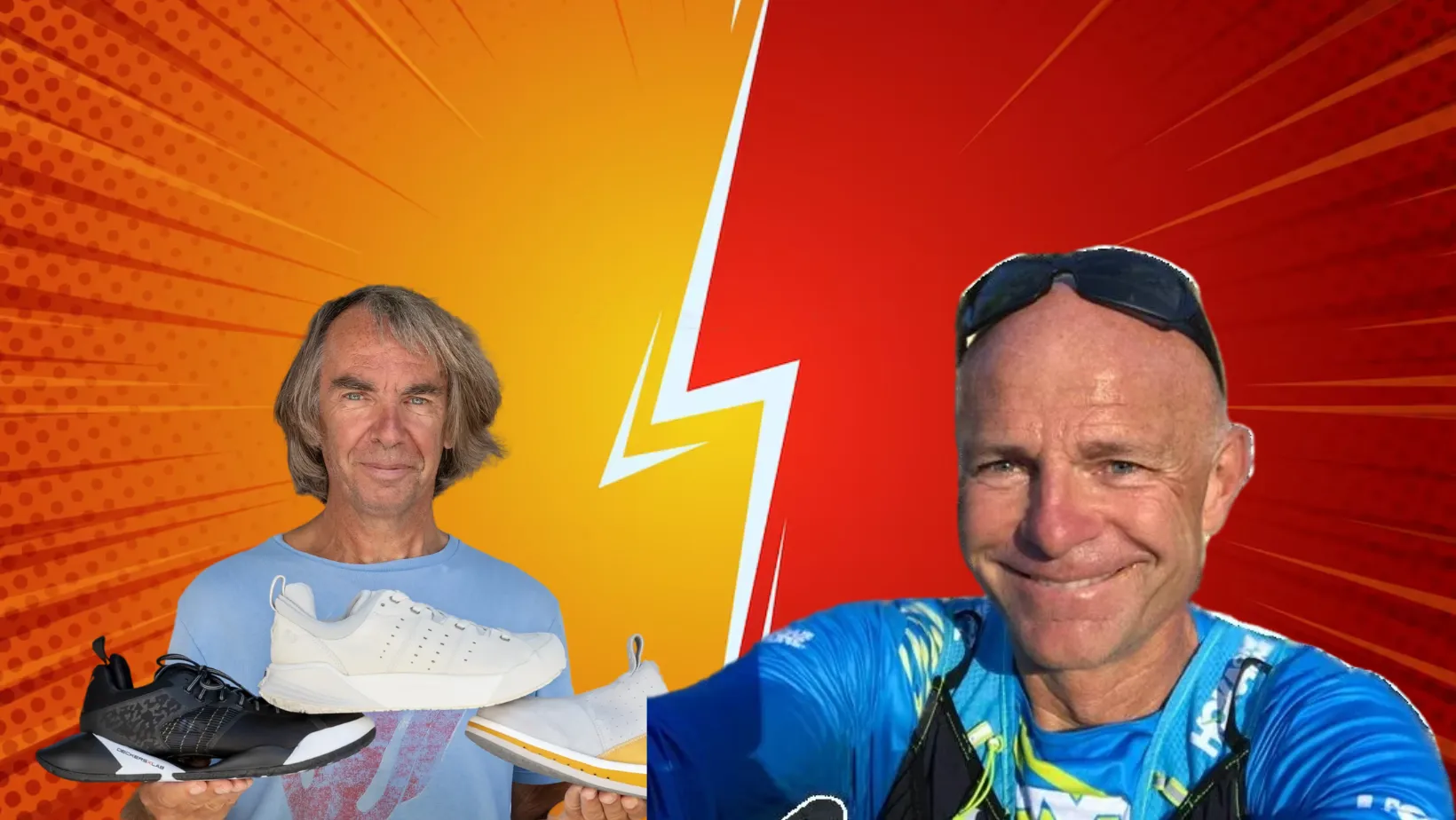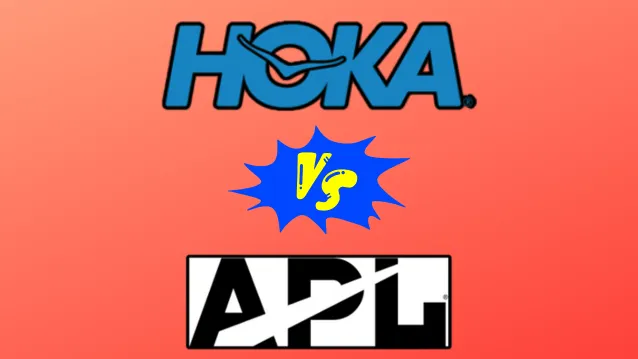Finding the ideal pair of running shoes is a critical decision for athletes at all levels. With a multitude of options available, selecting the right brand to suit your needs and preferences can be quite challenging.
Two prominent contenders in the athletic footwear arena are APL and Hoka. Both brands offer top-quality shoes, each with its distinctive advantages.
In this article, we delve into a comprehensive comparison of these two brands across various key factors to determine who leads.
Comparison Table Between APL And Hoka:
| Features | APL | Hoka |
|---|---|---|
| Founded In | 2009 | 2009 |
| Comfort & Fit | Flexible, medium cushioning | Maximum cushioning |
| Color Options | Varied classic and bright options | Vibrant neon and colorblocked options |
| Durability | Moderate, suited for daily training | High, built for high mileage |
| Performance | Versatile for a wide range of activities | Excellent shock absorption for long distances |
| Design & Style | Sleek and athletic | Thick and curved sole |
| Popularity | Growing brand with cult following | Very popular among marathoners |
| Best Seller | TechLoom Pro | Bondi 8 |
APL Overview:
Founded in 2009 by Adam and Ryan Goldston, Athletic Propulsion Labs is known for revolutionizing athletic shoes by seamlessly blending performance, comfort, and style.

Their shoes feature a balance of cushioning and support through the use of responsive Propel Foam in the midsole. This proprietary foam provides soft, pillowy cushioning while still maintaining a firm, responsive feel underfoot.
The flexible TechLoom woven upper material is another key feature of APL shoes. This lightweight, breathable upper allows the foot to move and flex naturally with each stride. Wearers remark how the TechLoom upper “moves with you” for uninhibited motion.
APL shoes strike a balance between plush cushioning and ground connection. They absorb impact comfortably without excessive softness that can undermine performance.
Across the board, wearers praise the secure, sock-like fit of APL shoes that keeps the foot locked in place without constriction. Many also comment on the stylish, sleek silhouette that pairs well with athletic or casual wear.
While designed with running and training in mind, the versatility and smart aesthetics make APL sneakers suitable for all-day wear.
Hoka Overview:
Founded in 2009 by Nicolas Mermoud and Jean-Luc Diard, Hoka One One burst onto the scene with their super thick midsoles, aiming to provide maximum cushioning for runners.

Initially, their oversized design was polarizing. But as more runners experienced the plush ride, Hoka gained a cult following among ultramarathoners and trail runners.
Hoka remains focused on cushioning and stability to create a smooth, comfortable run. Signature technologies like the Meta-Rocker outsole encourage a natural gait cycle and transition. The roomy toe box allows your feet to splay and relax over long miles.
For runners who struggle with joint pain and hard impact, Hoka’s pillow-like foam brings sweet relief. The soft landings and energetic rebound make each stride feel effortless. It’s easy to see why Hokas have a reputation for comfort.
Hokas aren’t the most flexible shoe due to the higher platform. And the bulky silhouette isn’t for everyone. But for runners craving a cushy feel, Hoka delivers plush shoes that can go the distance in blissful comfort.
Major Differences Between The Brands:
Now to better understand the contrasts between these brands we will explore their significant differences in various areas.
1) Comfort and Fit
APL prioritizes a natural range of motion with its flexible, medium cushioning. On the other hand, Hoka focuses on stability and shock absorption through deep, soft cushioning.
APL offers a balance between security and agility, enabling freedom of movement. In contrast, Hoka specializes in maximum cushioned comfort, ensuring a stable feel.
APL suits those desiring a flexible, barefoot-like experience, while Hoka excels for runners seeking luxuriously soft landings.
Also Check Out: Hoka VS Nike: Which Is Better For You?
2) Durability and Performance
APL with moderate cushioning lasts 300-500 miles, catering to daily training across various distances and speeds. It performs well in both short, intense sessions and endurance runs.
On the flip side, Hoka with its thick padding can also endure 300-500 miles before compression. Designed to absorb substantial impact during extended 10+ mile runs, Hoka is overkill for shorter distances but offers fatigue-fighting comfort during marathons.
Also Check Out: Fitville VS Hoka: Which Is Better?
3) Price
APL comes at around $200 per pair, catering to both fashion and performance-oriented athletes. This premium cost reflects the brand’s fusion of style and technology.
In contrast, Hoka averages around $150, appealing to dedicated runners who prioritize maximum cushioning. For those focused on mileage and seeking indestructible cushioning, Hoka’s higher price tag delivers value.
Also Check Out: Gravity Defyer VS Hoka: Which Is Better?
4) Design and Style
APL blends lifestyle and performance seamlessly, offering an athletic and versatile design. The shoes effortlessly transition from workouts to casual wear.
Hoka, with its maximalist cushioning approach, showcases a distinctly thick and curved sole design. While not as fashion-forward, this unique shape prioritizes function over style.
Also Check Out: Nobull VS hoka: Which Is Better?
5) Popularity
APL enjoys a burgeoning cult following among the fitness and streetwear crowd, appreciated for its crossover versatility.
Hoka is firmly established among hardcore endurance athletes who value springy cushioning above all else, particularly renowned among ultra runners.
Also Check Out: Clove VS Hoka: Which Is Better?
6) Target Markets
APL targets athletic fashion enthusiasts, urban runners, and individuals seeking all-day wear from work to exercise. The shoes smoothly transition between the gym and the streets.
Hoka, with its focus on extreme cushioning, directly appeals to marathoners and long-distance runners seeking superior impact protection. Hokas are designed for elite athletes who log ultra distances on a weekly basis.
Final Verdict:
The choice between APL and Hoka hinges on individual priorities – style versus maximum cushioning, flexibility versus stability.
APL excels in athletic aesthetics integrated into daily life, while Hoka dominates hardcore endurance sports with its plush cushioning. Both brands have their merits.
Opt for APL for versatile, responsive training and all-day wear, or select Hoka when Cloud-like cushioning is required for ultra distances. Assess your preferences and needs to determine which brand aligns better.


